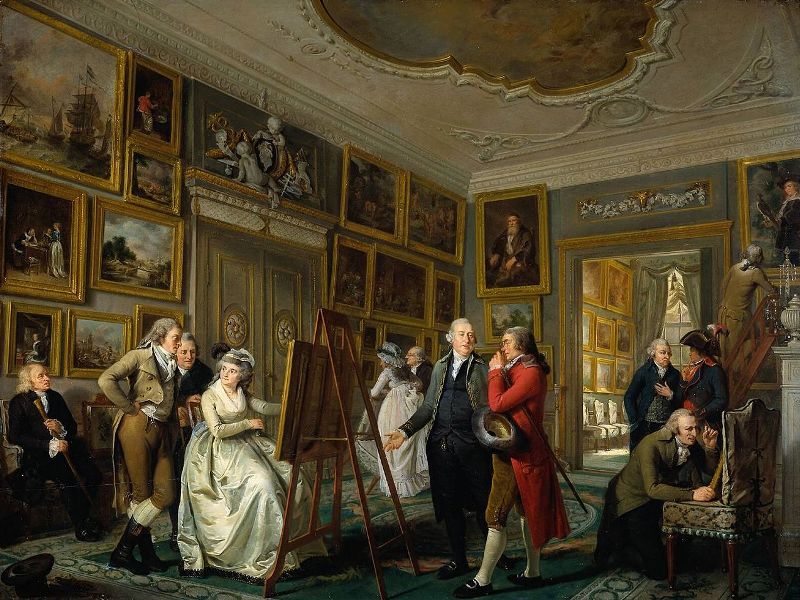Paul is a highly experienced, creative and tenacious litigator
paul.russell@russell.nl +31 20 301 55 55Corporate art collections, private individuals and museums lend art to one another. This involves benefits for both parties, however, there are also risks involved in lending art.

One benefit of lending art may be that the owner may include the exhibition to the “provenance” (history) of the work of art and that new, positive aspects will be discovered during the preparation of an exhibition or that there may be an upward effect on the value of a work of art.
Some of the drawbacks include that there are risks involved in the transport of a work of art, the work of art may be damaged (discoloration) it becomes generally known, however, there are also less obvious risks involved, such as, for instance, the US “use tax”, which is not widely known.
In some cases the provenance of a work of art may also pose a problem and lead to the attachment of a work of art. Subsequently, there will be lengthy legal proceedings, often in a different country and under a different legal system. Think, for instance, of the Crimean gold displayed in the Allard Pierson Museum, on which Russia and Ukraine are conducting legal proceedings before a Dutch court in the Netherlands as to who is entitled to the return of these unique golden artefacts from different museums in Ukraine displayed in the Netherlands in 2014.
Upon borrowing, big museums will often include a clause that a work of art may not be sold within a certain period of time by the lender (this may vary from a period of a few months to several years).
In addition, the security of the borrowing institution will always be a source of concern. Who does not remember the thefts of the Portuguese Crown Jewels from The Hague and the multimillion dollar art theft from the Kunsthal Rotterdam?
Questions still remain with regard to the copyright and publishing of a work of art, and, not least, on whether the lender is prepared to accept exclusions in the insurance policy in the event of war, political unrest, natural disasters or terrorist attacks. A so-called standard clause included in insurance policies that are offered for the loan.
In case of damage, will the lender only be compensated for the restoration costs or also for loss in value of the lent work of art and how is the loss in value to be assessed? This could be seen from the Rotterdam Museum Boymans van Beuningen, where a photographer seriously damaged a valuable painting that was supposed to be photographed. A superficial restoration was presumed to be sufficient, but the compensation of a major loss in value was “forgotten”.
The lender will always have to balance the benefits against the potential risks, and thus the negative aspects for the lender. These may have far-reaching consequences if they were not well assessed beforehand. The lender will have to make sure in advance whether he or she is willing to lend a work of art under these conditions.
Russell Advocaten has for many years been a leader in the field of art and law and will gladly assist you to make these assessments. Do you have any questions regarding this newsletter? Please contact:
Expedited liquidation is a quick way to terminate a legal entity. However, the scheme was also abused, disadvantaging creditors. A new law should prevent this. What requirements does an expedited liquidation have to meet from now on? And what options do creditors have to collect their claims?
In his interview on “Hidden Gems – Treasured artwork adds to allure of Netherlands”, Reinier Russell talks about how artworks still reflect the spirit of the Golden Age and where they can be found.
Entrepreneurs may have various reasons for ending their businesses. Expected profits may be disappointing, retirement may be approaching or a partnership (joint venture) may be ending. What should entrepreneurs bear in mind when terminating a business?
A new EU regulation requires anyone wishing to import cultural goods into the EU to have an import license or submit an importer’s declaration. When is which type of document required? How does it affect art dealers, galleries, auction houses and collectors, both inside and outside the EU?
In principle, the enforcement of foreign judgments is a national matter. But what if a dispute has already been dealt with by a foreign court? Can such a foreign judgment be enforced in the Netherlands or not?
An African mask that was sold for 150 euros fetched 4.2 million euros at an auction. Were the French sellers able to undo the sale? How would this case have ended in the Netherlands?